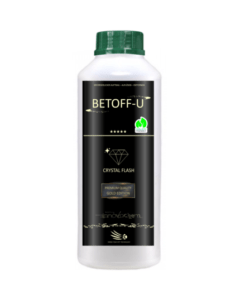Photovoltaic concrete is a very futuristic thing. One of the unanswered questions in architecture is the widespread use of photovoltaics. Although photovoltaic systems are becoming more and more common around the world, many observers still hope that there will be many faster. With building operations accounting for around 40% of global energy consumption, there is an unimaginably large platform for reducing energy consumption; efficiency is therefore crucial.
In addition to political considerations, the imposing aesthetics and high cost of solar panels have historically hindered their widespread integration. Researchers were therefore faced with the task of developing photovoltaic versions that are not only highly efficient but also more affordable and aesthetically pleasing. As a result, there has been a significant shift towards integrated building systems. These use photovoltaics to replace traditional building elements such as roofs and facades. The widespread use of photovoltaics in architecture will largely depend on the further development of these technologies.
Photovoltaic concrete. Innovations
Tesla’s solar roof tiles, which bear an uncanny resemblance to ordinary, non-photovoltaic roof tiles, are one recent, well-known example. With this groundbreaking innovation, which went into production last year, Elon Musk wanted to develop a visually appealing solar roof replacement technique that could work with a variety of architectural styles. To achieve this, Tesla created tempered glass tiles with a colored coating and small louvers that let light into the solar cells manufactured by Panasonic. Tesla claims that high-performance glass is as durable as steel.
Photovoltaic concrete. Development of photovoltaic concrete
Tesla is not the only one investing its resources in the development of photovoltaics. It is not only panels that will count in this interesting area of our lives. There is already energy-generating concrete, which may soon become more common. Of particular note are two cases that have recently contributed to the rapidly growing field of photovoltaic concrete.
Heliatek with LafargeHolcim
An innovative prototype of a photovoltaic concrete façade system was presented by LafargeHolcim and Heliatek at the French construction fair Batimat in November 2017. LafargeHolcim and Heliatek used their two different but complementary skill sets. They developed an architectural concrete panel façade system that can double the energy harvesting capacity of conventional roof-mounted solar solutions.
Heliatek is a German solar energy company and LarfargeHolcim is a Swiss building materials manufacturer and the largest cement producer in the world. The innovative technology combines Heliatek’s lightweight, ultra-thin HeliaFilm solar film with LafargeHolcim’s Ductal concrete panels. This unique method allows prefabricated Ductal panels with integrated solar power generation to be delivered to site.
Photovoltaic concrete. What about CO2?
‘HeliaFilm is the greenest photovoltaic solution in the world, with a CO2 lifecycle impact almost five times lower than traditional crystalline photovoltaics,’ – LafargeHolcim claims. What’s more, the solar panels could produce almost 30% of the annual energy needs of a typical 10-storey commercial building if they covered 60% of its façade. The developers of this cutting-edge technology anticipate that architects will be able to reduce a building’s energy expenditure while benefiting from a lightweight, low-maintenance and durable cladding solution.
Other players
Researchers from ETH Zurich’s Block Research Group have created a multi-layered, ultra-thin, self-supporting concrete structure that uses photovoltaic technology. This extremely corrugated structure provides waterproofing, insulation and temperature regulation, as well as generating electricity.
Between the two layers of concrete are layers of insulation, heating coils and cooling coils.
According to the work of LafargeHolcim and Heliatek, a thin layer of photovoltaic cells is applied to the last layer of concrete to provide electricity for the building. Thiswork shows that it is possible to construct a thin concrete shell using flexible formwork and solar elements, and offers countless insights into the future of photovoltaic concrete with an average thickness of around 5.08 cm.
Cleaning photovoltaic panels and photovoltaic concrete
To clean photovoltaic panels and photovoltaic concrete, BETOFF-U liquid can be used. It is an extremely gentle formula, yet very effective. The liquid is formulated on a cosmetic basis, which is fully sufficient to clean glass, plastic, wood, steel as well as concrete. It can be used to remove all kinds of tarnish from photovoltaic panels and photovoltaic concrete, as well as stubborn dirt. Limescale caused by rainfall can also be easily dissolved with BETOFF-U.

